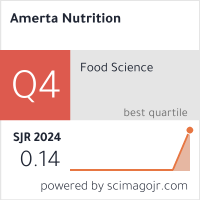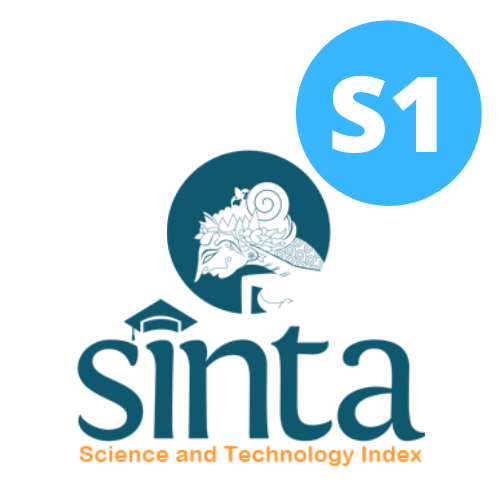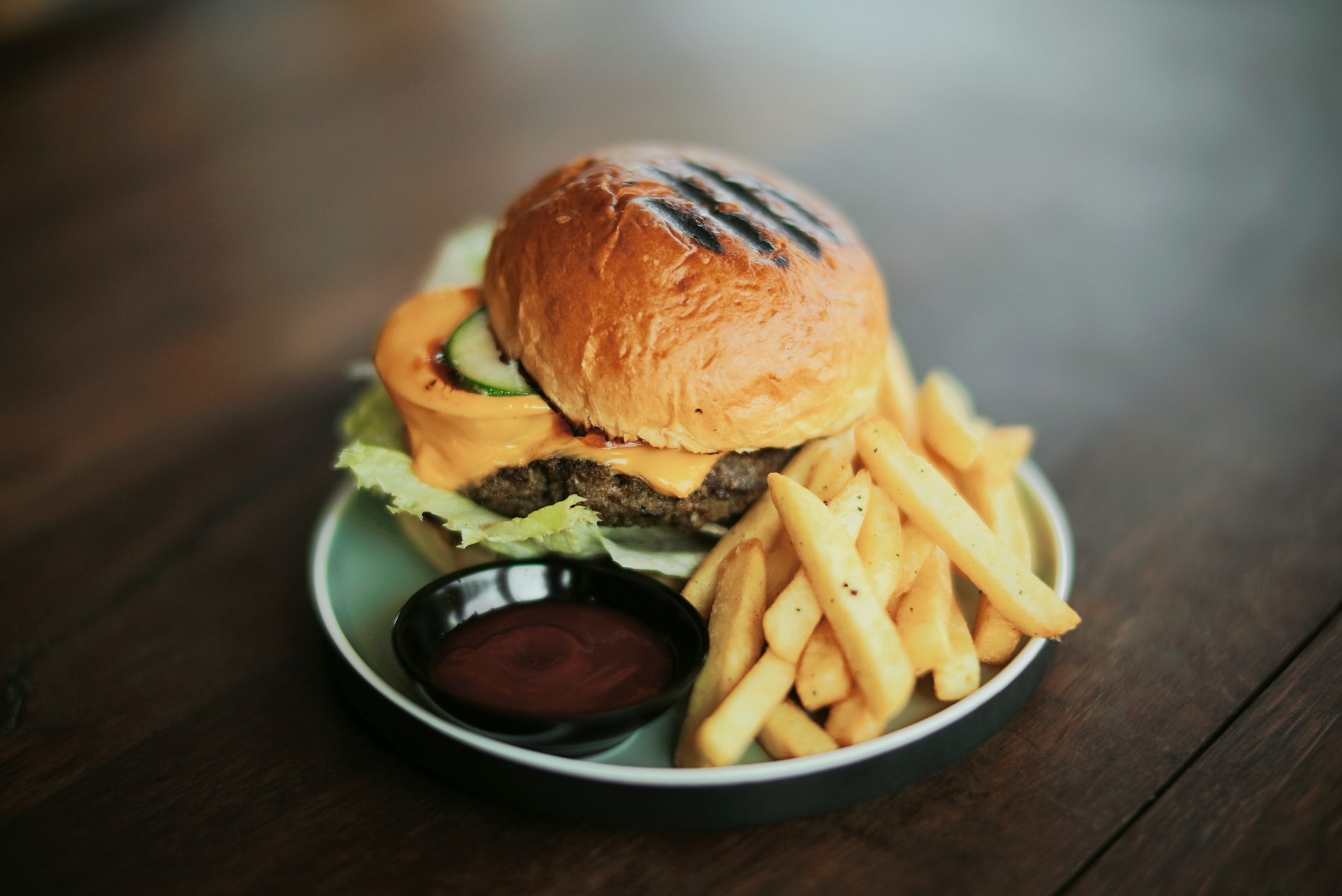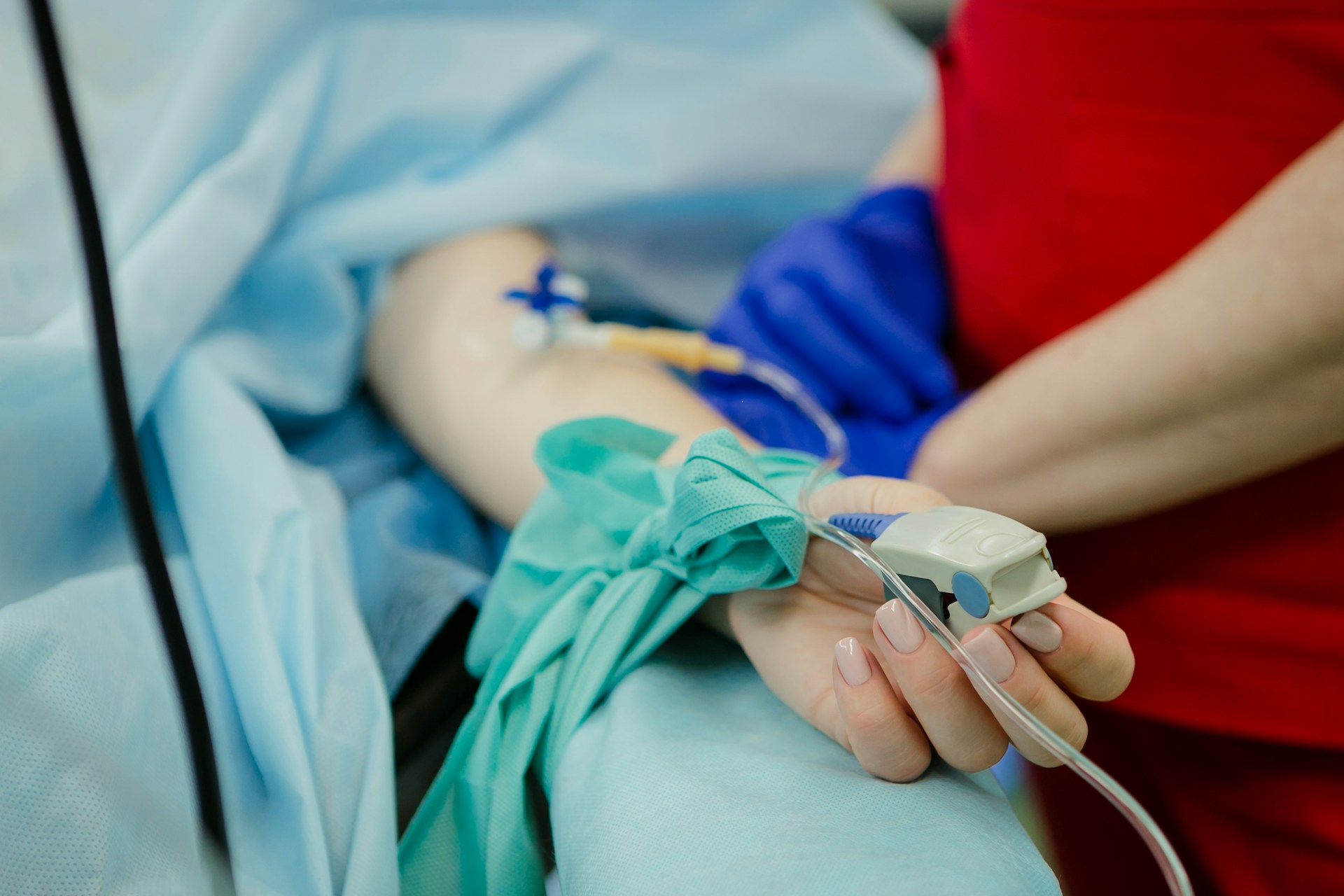Nutritional and Organoleptic Value in the Formula Enteral of Growol and Germinated Mung Bean Flour as an Alternative Enteral Type 2 Diabetes Mellitus
Kandungan Gizi dan Uji Organoleptik Formula Enteral Tepung Growol dan Kecambah Kacang Hijau sebagai Alternatif Enteral Diabetes Melitus Tipe 2

Downloads
Background: Type 2 Diabetes Mellitus (T2DM) is a metabolic disease characterized by increased blood glucose. Nutritional support rich in dietary fiber and high protein can stimulate insulin secretion, thereby inhibiting increased blood glucose. Enteral of Growol-Germinated Mung Bean Flour (ENGROCAJO) is a formula developed from growol flour and germinated mung bean flour. It contains high dietary fiber with protein and is an alternative nutritional therapy for people with T2DM. Hospital Diabetes Mellitus (DM) enteral formula administered to patients is limited to dietary fiber.
Objectives: This study aimed to analyze the nutritional value and organoleptic value of the ENGROCAJO formula and compare it with the hospital DM enteral formula.
Methods: This was an observational laboratory study developed an enteral formula from growol and germinated mung bean flour. It analyzed the nutritional value using proximate and dietary fiber analysis. The organoleptic assessment utilized a hedonic test with 20 participants. The nutritional and organoleptic contents were compared with hospital DM enteral formula. The difference test between formulas was tested using Kruskal-Wallis with a significant value of p<0.05.
Results: The nutritional content in 100 g of ENGROCAJO formula and hospital DM enteral formula includes energy of 386.86 and 329.49 kcal, protein of 41.38% and 20.43%, fat of 2.78% and 8.88%, carbohydrate of 49.08% and 38.55% with dietary fiber of 22.43% and 3.62%. Organoleptic assessment of aroma, color, flavor, and thickness showed that the ENGROCAJO formula had higher quality than the hospital DM enteral formula. However, the flavor aspect showed significant difference (p=0.038).
Conclusions: ENGROCAJO formula contains higher protein and dietary fiber compared to the hospital DM enteral formula. There was a significant difference in the organoleptic taste between the ENGROCAJO formula and the hospital DM enteral formula.
INTRODUCTION
Diabetes Mellitus (DM) is a chronic condition characterized by high blood glucose levels caused by a lack of insulin secretion. Insulin is a hormone produced by pancreatic cells and functions in the body's use and storage of carbohydrates, proteins, and fats. The inability of the pancreas to produce insulin affects the occurrence of hyperglycemia or increased blood glucose levels1Diabetes mellitus is one of the biggest causes of death in the world. In 2021, the International Diabetes Federation (IDF) released data indicating that the global prevalence of diabetes in the world is 537 million people, and by 2045, it is projected to increase by 46% to 783 million people. Meanwhile, Indonesia is ranked 5th among countries with the highest number of diabetes cases in 2021, with 19.5 million people out of a total population of 273.8 million people It is projected to increase to 28.6 million people by 20452The prevalence of diabetes in Indonesia is determined based on data from the Basic Health Research (Reset Kesehatan Dasar or RISKESDAS), with blood tests following the consensus of The Indonesian Society of Endocrinology (Perkumpulan Endocrinology Indonesia or PERKENI), in the population aged 15 and above in 2018, which stood at 8.5% and increased from 2013, namely 6.9%3.
The classification of Diabetes Mellitus (DM) according to the American Diabetes Association (ADA) is divided into Type 1 Diabetes Mellitus (T1DM) (autoimmune ꞵ cell damage), Type 2 Diabetes Mellitus (T2DM) (decreased insulin secretory ability of ꞵ cells), Gestational Diabetes Mellitus (diabetes during pregnancy), and certain types of diabetes mellitus (due to other causes)4Type 2 Diabetes Mellitus (T2DM) is the most common type of diabetes with the most significant number, counting to 90-95% of all DM cases. Triggers for T2DM include unhealthy lifestyle changes such as lack of physical activity, high consumption of carbohydrate and fat rich food, and insufficient consumption of fruit and vegetables5In the long term, these lifestyle changes cause insulin resistance, which means the body's insulin- targeted cells cannot respond appropriately. Insulin resistance, if not compensated by a reduction in pancreatic ꞵ cells in secreting insulin eventually manifests clinically as hyperglycemia5;6If this condition persists for a long time, there is a risk of chronic complications such as disorders of the cardiovascular system, liver disease, cancer, obesity, retinopathy, and cerebrovascular disease4;7;8;9;10;11;12.
People with DM need to control their blood glucose levels to prevent significant increases in blood glucose levels and avoid worsening their condition. DM treatments based on PERKENI consist of pharmacological and non-pharmacological therapy. Pharmacological therapy includes taking oral and injectable antidiabetic drugs. In contrast, non-pharmacological therapy involves increasing physical activity, reducing salt consumption, quitting smoking, and a diet high in fiber, adequate protein, and low in fat and carbohydrates13Diet management involves increasing the consumption of fruit, vegetables, and other natural foods such asgrowoland germinated mung beans.
Growol, a typical traditional food typical of Kulonprogo (Special Region of Yogyakarta), is a product of fermented cassava prepared by soaking, molding, and steaming. The soaking process during cassava fermentation is carried out by probiotic lactic acid bacteria, namelyLactobacillus plantarumandLactobacillus rhamnose's14;15;16This fermentation process produces prebiotic compounds indicated by a positive prebiotic activity score, suggesting thatgrowolhas the potential to be a functional food product. Functional food serves a primary function of fulfilling nutritional needs, a secondary function of being appealing to the human senses, and a tertiary function of preventing or minimizing the development of a disease14Previous research shows thatgrowolcan increase insulin levels and reduce blood glucose levels.Growolas a functional food contains dietary fiber. Dietary fiber works by absorbing fluids in the digestive tract, causing the digested food to thicken, resembling a gel-like substance. The thicker digested food then slows down the digestive process, which delays the absorption of glucose into the bloodstream and is able to prevent hyperglycemia. Moreover, in addition to fiber, flavonoids found ingrowolfunction to stimulate insulin sensitivity and release insulin secretion from beta cell in the pancreas. Thus, it helps in increasing blood insulin levels17.
Fermentation in the production ofgrowolcan hydrolyze the starch content into reducing sugars, oligosaccharides or dextrin. It is also results in undigested resistant starch and reduces the levels of reducing sugars and sucrose. Previous studies showed thatgrowolexperienced an increase in carbohydrate content, total dietary fiber, non-water-soluble dietary fiber, and water- soluble dietary fiber, as well as a decreased in total sugar, reduction sugar and sucrose from cassava. The changedgrowolnutrients then function in diet therapy to treat degenerative diseases such as diabetes mellitus16;18;19Growolflour has a carbohydrate content of 95.34%, protein of 0.36%, sugar of 0.23%, sucrose of 0.02%, flavonoid levels of 6.8 mg, and 37.2% antioxidant activity16;20;21The sugar and sucrose levels ofgrowolflour is lower than that of cassava, white rice, and wheat flour. Also, 100 g ofgrowolcontains 13.17 g of dietary fiber and it is higher than cassava, cassava leaf, white rice, and wheat flour16;17Dietary fiber is essential for individual with diabetes, as it reduces fasting blood glucose levels and the percentage of glycosylated hemoglobin (HbA1c)22
Mahan, L. K. & Raymond, J. L. Krause’s Food & The Nutrition Care Process. Journal of Nutrition Education and Behavior vol. 51 (Elsevier Inc., Canada, 2017).
International Diabetes Federation. IDF Diabetes Atlas. https://diabetesatlas.org/idfawp/resource-files/2021/07/IDF_Atlas_10th_Edition_2021.pdf (2021).
Riskesdas (Riset Kesehatan Dasar). Hasil Utama Riset Kesehatan Dasar (RISKESDAS). Riskesdas vol. 44 https://kesmas.kemkes.go.id/assets/upload/dir_519d41d8cd98f00/files/Hasil-riskesdas-2018_1274.pdf (2018).
American Diabetes Association. 2. Classification and diagnosis of diabetes: Standards of medical care in diabetes-2021. Diabetes Care 44, S15–S33 (2021).
Dietrich, S. et al. Gene-lifestyle interaction on risk of type 2 diabetes: A systematic review. Obesity Reviews 20, 1557–1571 (2019).
Keane, K. N., Cruzat, V. F., Carlessi, R., de Bittencourt Jr., P. I. H. & Newsholme, P. Molecular Events Linking Oxidative Stress and Inflammation to Insulin Resistance and?-Cell Dysfunction.pdf. Oxidative Medicine and Cellular Longetivity 2015, 1–15 (2015).
Mane, K., Chaluvaraju, K., Niranjan, M., Zaranappa & Manjuthej, T. Review of Insulin and its Analogues in Diabetes Mellitus. J Basic Clin Pharm 3, 283–293 (2012).
Pasquel, F. J. & Umpierrez, G. E. Hyperosmolar Hyperglycemic State: A Historic Review of the Clinical Presentation, Diagnosis, and Treatment. Diabetes Care 37, 3124–3131 (2014).
Skyler, J. S. et al. Differentiation of diabetes by pathophysiology, natural history, and prognosis. Diabetes 66, 241–255 (2017).
Goguen, J. & Gilbert, J. Hyperglycemic Emergencies in Adults. Can J Diabetes 42, S109–S114 (2018).
Asmat, U., Abad, K. & Ismail, K. Diabetes mellitus and oxidative stress—A concise review. Saudi Pharmaceutical Journal 24, 547–553 (2016).
Rhee, S. Y. & Kim, Y. S. Peripheral Arterial Disease in Patients with Type 2 Diabetes Mellitus. Diabetes Metab J 39, 283 (2015).
Perkumpulan Endokrinologi Indonesia (PERKENI). Pedoman Pengelolaan Dan Pencegahan Diabetes Melitus Tipe 2 Dewasa Di Indonesia 2021. vol. 1 (PB PERKENI, Jakarta, 2021).
Nugraheni, M. Potensi Makanan Fermentasi Sebagai Makanan Fungsional. in Prosiding Pendidikan Teknik Boga Busana vol. 6 (2011).
Dwi Rukmi Putri, W., Wisesa Marseno, D. & Nur Cahyanto, M. Isolasi Dan Karakterisasi Bakteri Asam Laktat Amilolitik Selama Fermentasi Growol, Makanan Tradisional Indonesia. Jurnal Teknologi Pertanian 13, (2012).
Puspaningtyas, D. E., Sari, P. M., Kusuma, N. H. & Helsius SB, D. Analisis Potensi Prebiotik Growol: Kajian Berdasarkan Perubahan Karbohidrat Pangan. GIZI INDONESIA 42, 83 (2019).
Nofia, Y., Wasita, B. & Susilawati, T. N. Elevated Growol Flour Reduce Fasting Blood Glucose, HOMA-IR and Increase Insulin Level in Rat Model with Type 2 Diabetes Mellitus. Media Gizi Indonesia 17, 151–158 (2022).
Helsius, D. S., Inayah, I., Puspaningtyas, D. E., Sari, P. M. & Kusuma, N. H. Effect of Cassava Fermentation on Reducing Sugar and Sucrose Levels: A Preliminary Study of Healthy Snack Development. Journal of Healthcare and Biomedical Science 1, 20–34 (2023).
Puspaningtyas, D. E., Sari, P. M. & Kusuma, R. J. Exploring the potency of gathotan and gathot as diabetes functional food: resistant starch analysis. IOP Conf Ser Earth Environ Sci 207, 012042 (2018).
Kanetro, B., Swasono, D. H. & Paiman. Improvement of starch gelatinization and amino acids profile of growol with addition of germinated mungbean (Vigna radiata). Systematic Reviews in Pharmacy 10, 48–52 (2019).
Nofia, Y., Wasita, B. & Susilawati, T. N. The Level of Flavonoid and the Antioxidant Activity of the Growol Flour. in Proceedings of the 3rd International Conference on Social Determinants of Health 257–260 (SCITEPRESS - Science and Technology Publications, 2021). doi:10.5220/0010759100003235.
McRae, M. P. Dietary Fiber Intake and Type 2 Diabetes Mellitus: An Umbrella Review of Meta-analyses. J Chiropr Med 17, 44–53 (2018).
Reynolds, A. N., Akerman, A. P. & Mann, J. Dietary fibre and whole grains in diabetes management: Systematic review and meta-analyses. PLoS Med 17, e1003053 (2020).
Kementerian Kesehatan Republik Indonesia. Data Komposisi Pangan Indonesia (DKPI). http://panganku.org/ (2018).
Shen, X. et al. Polyphenol Extracts from Germinated Mung Beans Can Improve Type 2 Diabetes in Mice by Regulating Intestinal Microflora and Inhibiting Inflammation. Front Nutr 9, (2022).
Huang, X., Cai, W. & Xu, B. Kinetic changes of nutrients and antioxidant capacities of germinated soybean (Glycine max L.) and mung bean (Vigna radiata L.) with germination time. Food Chem 143, 268–276 (2014).
Guo, X., Li, T., Tang, K. & Liu, R. H. Effect of Germination on Phytochemical Profiles and Antioxidant Activity of Mung Bean Sprouts (Vigna radiata). J Agric Food Chem 60, 11050–11055 (2012).
Dahiya, P. K. et al. Mung Bean: Technological and Nutritional Potential. Crit Rev Food Sci Nutr 55, 670–688 (2015).
Kapravelou, G. et al. Germination Improves the Polyphenolic Profile and Functional Value of Mung Bean (Vigna radiata L.). Antioxidants 9, 746 (2020).
Hamidah, N. & Taat Uji, E. Beban Glikemik Roti Tawar Substitusi Tepung Singkong (Manihot Esculenta) Dan Tepung Tempe. Media Gizi Indonesia 14, 154–163 (2019).
Latimer, G. W. Jr. Official Methods of Analysis of AOAC International. (Oxford University PressNew York, New York, 2023). doi:10.1093/9780197610145.001.0001.
Asp, N. G. Enzymatic Gravimetric Methods. in Handbook of Dietary Fiber in Human Nutrition 3rd ed (ed. Spiller, G.) (CRC Press, California, 2001).
Nopriantini, N. et al. Alkaloid, Protein, Dietary Fiber Content, and Acceptability of Lacto Cookies Substituted with Banana Blossom (Musa Paradisiaca Linn.) and Fish Flour (Rasbora Argyrotaenia). Amerta Nutrition 7, 217–223 (2023).
Triandini, I. G. A. A. H. & Wangiyana, I. G. A. S. Mini-Review Uji Hedonik Pada Produk Teh Herbal Hutan. Jurnal Silva samalas: Journal of Forestry and Plant Science 5, 12–19 (2022).
Wangiyana, I. G. A. S., Kurnia, N., Triandini, I. G. A. A. H. & Lesmana, P. S. W. Pelatihan Responden Sensori Pangan Untuk Mahasiswa Program Studi Kehutanan Universitas Pendidikan Mandalika Menggunakan Variasi Skala Hedonik. Journal of Community Service) 5, 827–834 (2023).
Dahlan, M. S. Statistik Untuk Kedokteran Dan Kesehatan. (Salemba Medika, Jakarta, 2014).
Afandi, F. A. Correlation between High Carbohydrate Foods with Glycemic Index. JURNAL PANGAN 28, 145–160 (2019).
Hoerudin. Indeks Glikemik Buah Dan Implikasinya Dalam Pengendalian Kadar Glukosa Darah. vol. 8 (Buletin Teknologi Pascapanen Pertanian, 2012).
Purbowati, P. & Kumalasari, I. Glycemic Index of Rice by Several Processing Methods. Amerta Nutrition 7, 224–229 (2023).
Kanetro, B. Hypocholesterolemic Properties of Protein Isolate from Cowpeas (Vigna Unguiculata) Sprout in Normal and Diabetic Rats. Procedia Food Sci 3, 112–118 (2015).
Kanetro. Amino acid profile of soybean (Glicine max) sprout protein for determining insulin stimulation amino acids. Int Food Res J 25, 2497–2502 (2018).
Kanetro, B., Pujimulyani, D., Luwihana, S. & Sahrah, A. Karakteristik Beras Analog Berindeks Glisemik Rendah dari Oyek dengan Penambahan Berbagai Jenis Kacang-Kacangan. Agritech 37, 256 (2018).
Probosari, E. Pengaruh Protein Diet Terhadap Indeks Glikemik. JNH (Journal of Nutrition and Health) 7, 33–39 (2023).
Arif, A. bin, Budiyanto, A. & Hoerudin, H. Nilai Indeks Glikemik Produk Pangan dan Faktor-faktor yang Memengaruhinya. Jurnal Penelitian dan Pengembangan Pertanian 32, (2013).
Sari, P. M., Puspaningtyas, D. E. & Kusuma, R. J. Dietary fiber and carboydrate contents of gathotan and gathot as functional food for people with diabetes mellitus. Jurnal Gizi dan Dietetik Indonesia (Indonesian Journal of Nutrition and Dietetics) 5, 88 (2018).
Mudgil, D. The Interaction Between Insoluble and Soluble Fiber. in Dietary Fiber for the Prevention of Cardiovascular Disease 35–59 (Academic Press, 2017). doi:10.1016/B978-0-12-805130-6.00003-3.
Dong, Y., Chen, L., Gutin, B. & Zhu, H. Total, insoluble, and soluble dietary fiber intake and insulin resistance and blood pressure in adolescents. Eur J Clin Nutr 73, 1172–1178 (2019).
Breneman, C. B. & Tucker, L. Dietary fibre consumption and insulin resistance – the role of body fat and physical activity. British Journal of Nutrition 110, 375–383 (2013).
Khan, K. et al. The effect of viscous soluble fiber on blood pressure: A systematic review and meta-analysis of randomized controlled trials. Nutrition, Metabolism and Cardiovascular Diseases 28, 3–13 (2018).
Wang, H., Hong, T., Li, N., Zang, B. & Wu, X. Soluble dietary fiber improves energy homeostasis in obese mice by remodeling the gut microbiota. Biochem Biophys Res Commun 498, 146–151 (2018).
Sawicki, C. et al. Dietary Fiber and the Human Gut Microbiota: Application of Evidence Mapping Methodology. Nutrients 9, 125 (2017).
Post, R. E., Mainous, A. G., King, D. E. & Simpson, K. N. Dietary Fiber for the Treatment of Type 2 Diabetes Mellitus: A Meta-Analysis. The Journal of the American Board of Family Medicine 25, 16–23 (2012).
Khurniawan, A. Pangan Fungsional Dan Kesehatan. vol. 2 (JAMC idea’s, 2015).
Everard, A. & Cani, P. D. Diabetes, obesity and gut microbiota. Best Pract Res Clin Gastroenterol 27, 73–83 (2013).
Copyright (c) 2024 Amerta Nutrition

This work is licensed under a Creative Commons Attribution-ShareAlike 4.0 International License.
AMERTA NUTR by Unair is licensed under a Creative Commons Attribution-ShareAlike 4.0 International License.
1. The journal allows the author to hold the copyright of the article without restrictions.
2. The journal allows the author(s) to retain publishing rights without restrictions
3. The legal formal aspect of journal publication accessibility refers to Creative Commons Attribution Share-Alike (CC BY-SA).
4. The Creative Commons Attribution Share-Alike (CC BY-SA) license allows re-distribution and re-use of a licensed work on the conditions that the creator is appropriately credited and that any derivative work is made available under "the same, similar or a compatible license”. Other than the conditions mentioned above, the editorial board is not responsible for copyright violation.












































